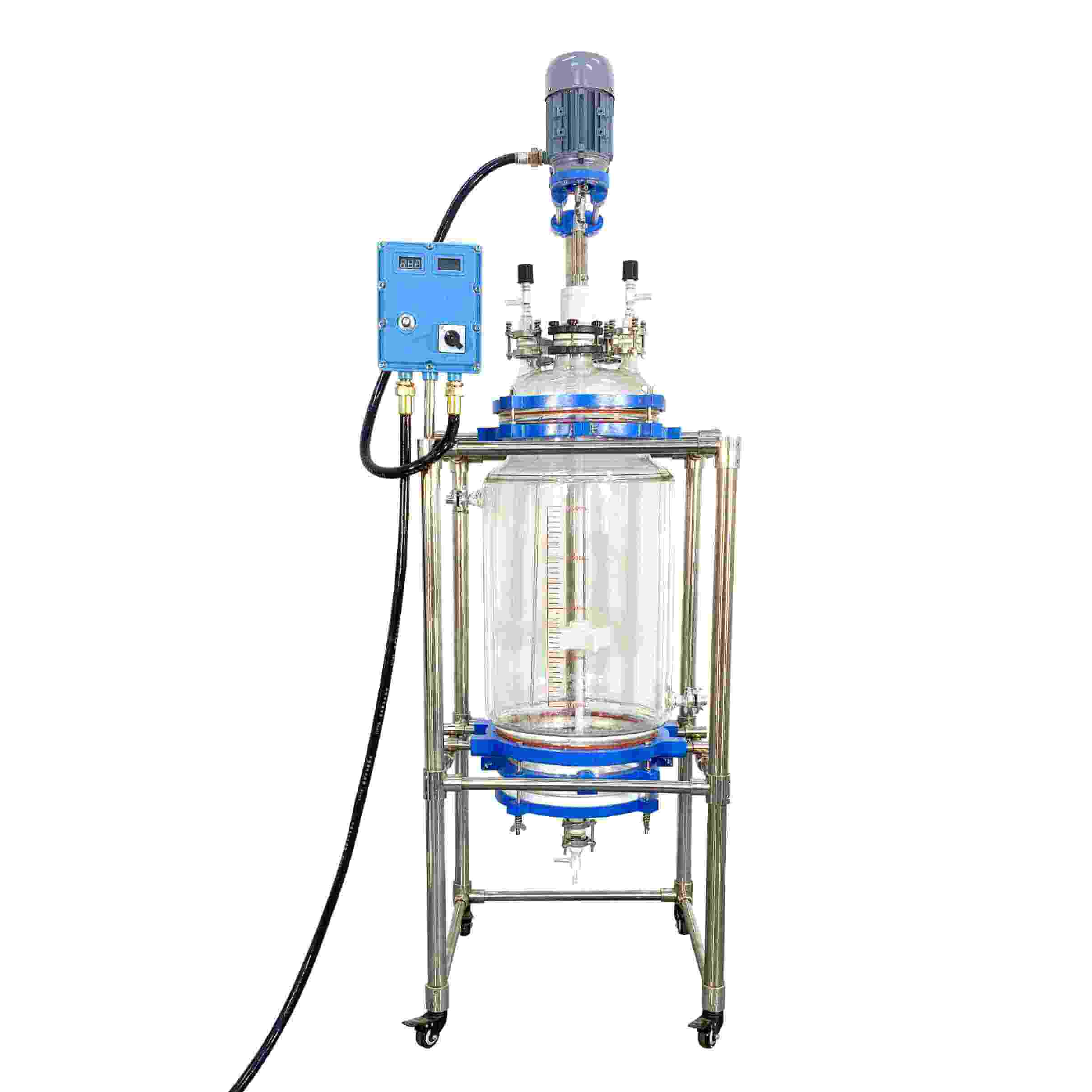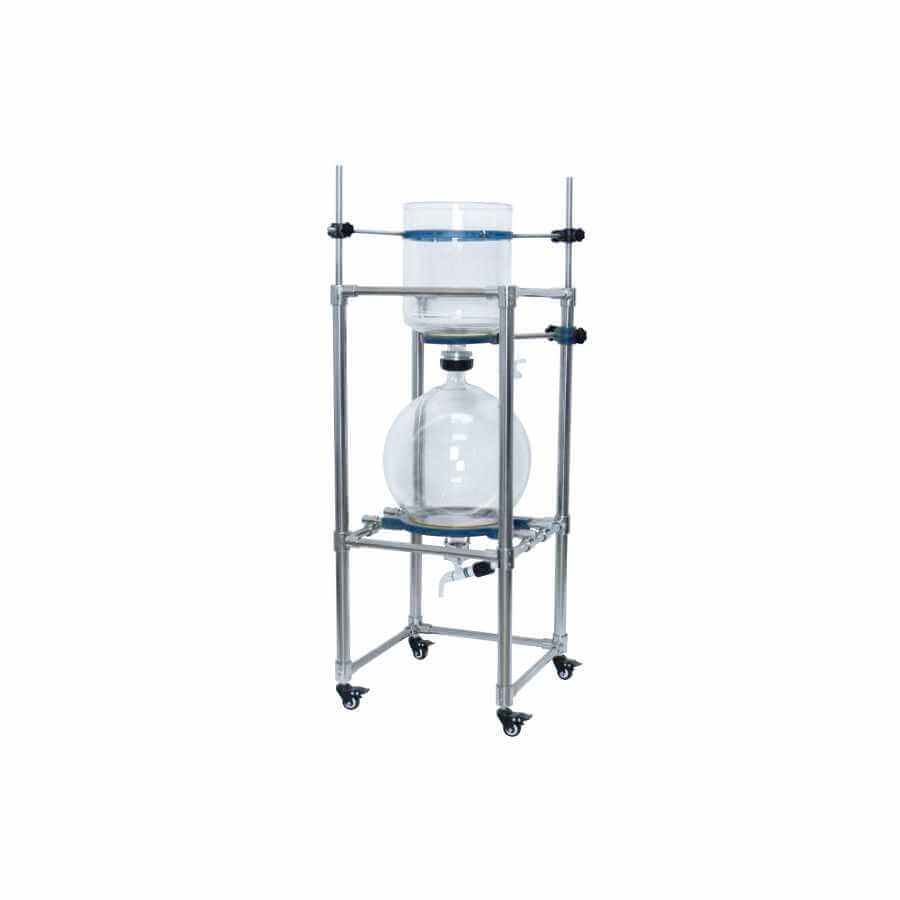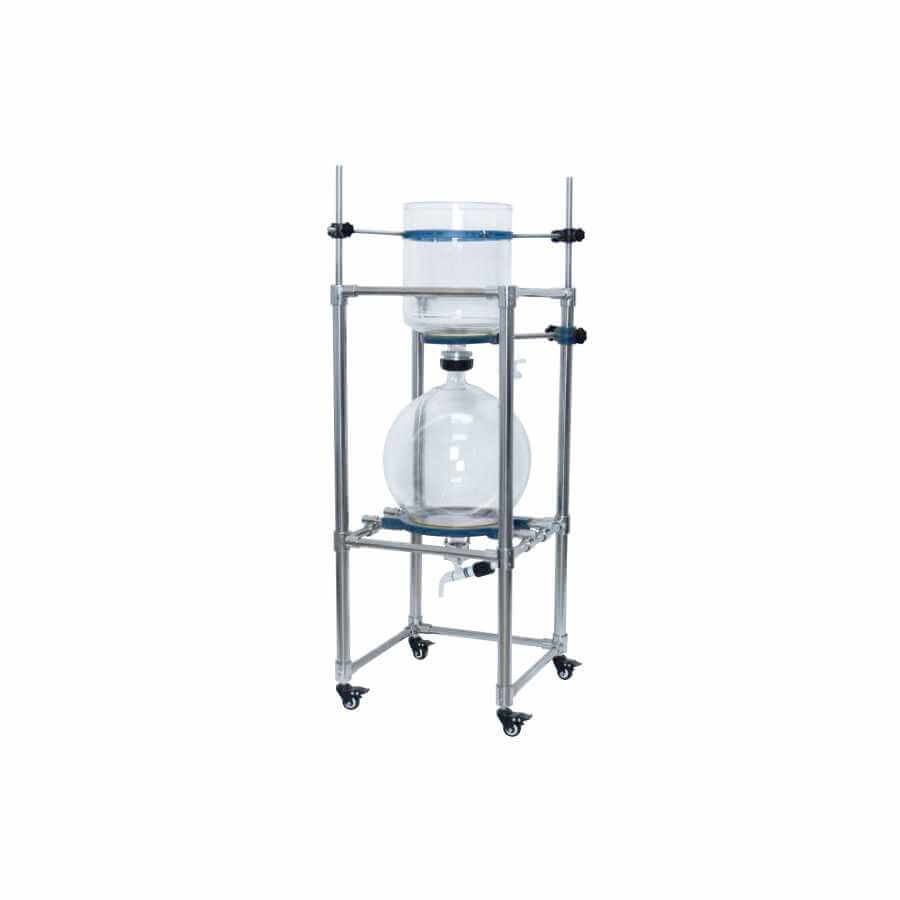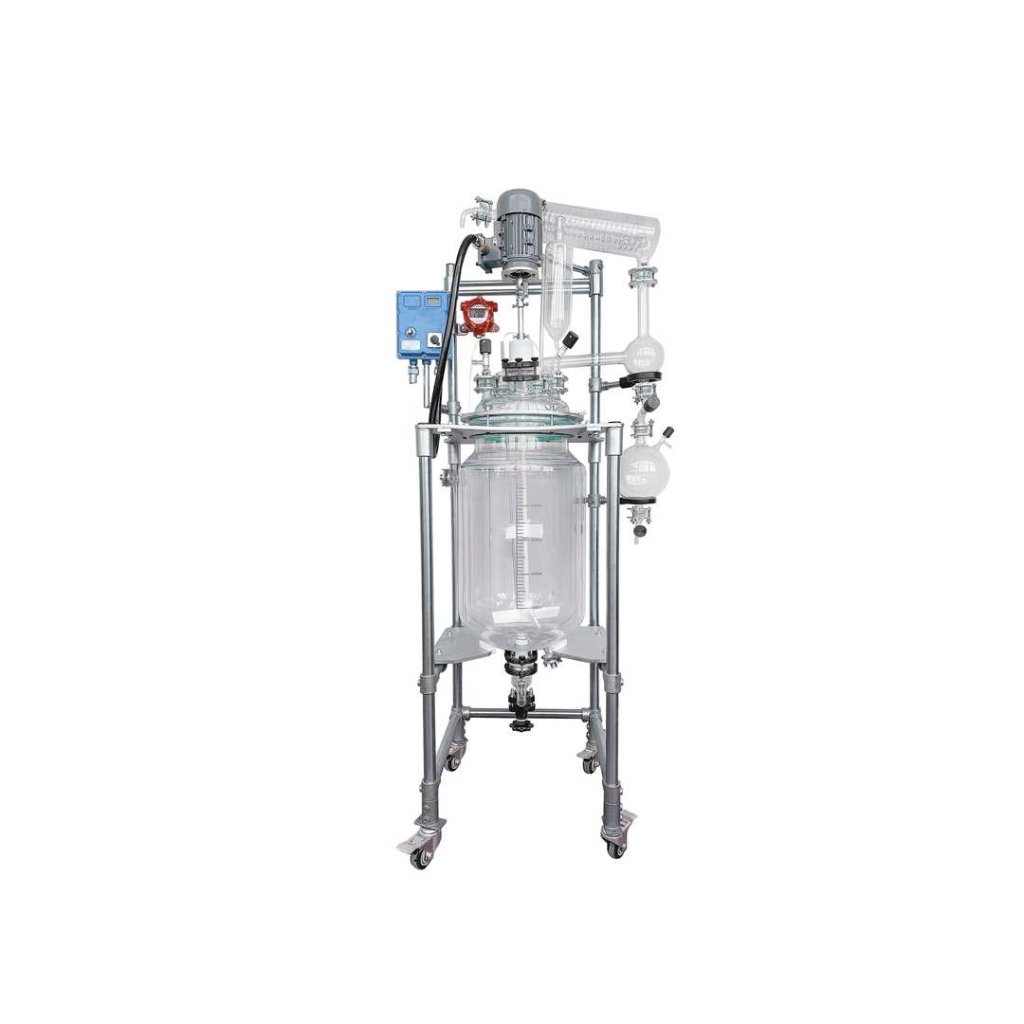


Glass Reactor
Glass reactors: used in chemical reactions, drug research and development, fine chemicals, food manufacturing, and other fields.
Material
glass
Capacity (L)
10-10000+
Mixing system
anchor, paddle, frame and others
Heating system
electric heating, oil heating and others
RUNGYU glass reactors are commonly used biochemical instruments and are widely used in modern fine chemicals, biopharmaceuticals, scientific research and experiments, and other industries. They can be used for concentration, distillation, reflux, separation, and purification reactions under the conditions of constant speed, constant force, and constant temperature. It is an ideal equipment for teaching, experiment, pilot test, and production.
Request a quoteGlass reactors have a variety of uses in the chemical industry, such as distillation, API manufacturing, crystallization, extraction, and post-processing. Glass reactors are designed to carry out synthesis reactions of different types of materials under controlled temperature and vacuum environments. Each glass reactor features an adjustable stirring speed and a constant pressure feed funnel that adds materials to the vessel at a uniform and controlled rate. At the same time, the built-in condenser can recycle some materials for secondary use at a controlled speed, which can greatly save production costs.

Working principle of glass reactor
1. Through the jacket of the double-layer glass reactor, inject the material or liquid into the glass reactor for thermal dissolution or cooling treatment.
2. External cooling or heating equipment is connected to the double-layer glass reactor.
3. Ensure that the material or liquid is heated to a constant level by the stirrer.
4. The stirring reaction is carried out naturally or under negative pressure in a closed glass reactor.
5. At the end of the reaction, the material is discharged through the given discharge valve at the bottom of the glass reactor.
6. They are manufactured in various forms, sizes, and materials to suit the end user’s chemistry.
7. Glass reactors provide an excellent method for obtaining reliable and consistent results, allowing scientists to scale up reactions and increase the yield of process materials used.
The main characteristics of glass reactor
1. Constant rotation speed, no brushes, no sparks, safe and stable, and can work continuously.
2. A complete set of glass components is produced from G3.3 borosilicate glass, which has excellent chemical and physical properties.
3. The glass interlayer can perform heating reactions when connected to hot oil and circulated, and can perform low-temperature reactions when connected to freezing liquid.
4. The reaction can be carried out at room temperature, and the heat of the reaction can be quickly taken away by simply adding tap water.
5. The discharge port of the glass reactor has a flange port and a PTFE valve. There are no dead corners in the container and it is removable to facilitate the discharge of solid materials.
6. The main body is made of stainless steel, which is beautiful and anti-corrosion.
7. The PTFE element is sealed and can maintain a high vacuum degree.
8. It can work under normal pressure and negative pressure, and the negative pressure can reach -0.098MPa.
9. The alternator has frequency conversion speed regulation for stirring, reliable operation, large torque, and no sparks.
10. The inner core of the stirring rod of the glass reactor is made of 321 stainless steel, which enhances the anti-corrosion performance. Military technology makes the workmanship more refined and the operation proficiency high.

Characteristics of glass reactor
1. ETL tested, compliant with UL and CSA standards, CE (optional)
2. The glass reactor includes a high-quality thermal insulation jacket with an opening/closing viewing window and top/bottom adjustable drawstrings, specially designed and manufactured for glass reactors. These jackets will extend the life of the glass reactor chiller, allowing it to be lowered to lower temperatures and reducing utility bills.
3. The double-layer glass reactor allows vacuuming from the outer jacket, thus protecting the temperature of the circulating fluid and allowing it to better control the work. It also helps prevent frost from forming on the outside of the container, allowing the material to be clearly seen.
4. All sealing parts of the glass reactor are made of solvent-resistant PTFE to ensure long-term durability and operation.
5. All glassware is made of heat-resistant/cold-resistant/corrosion-resistant food-grade high borosilicate glass.
6. Adjustable stirring rate provides large torque or high speed.
7. Optional multi-layer stirring blades are available to obtain the best reaction effect.
8. Wide operating temperature range, from -110°F to 400°F.
9. Large condenser cooling surface with excellent condensation performance.
10. Sturdy stainless steel reinforced PTFE stirrer with anchor stirrer, suitable for various viscous materials. Easy visual operation with digital speed and temperature displays.
11. Heavy-duty stainless steel support frame with lockable casters to ensure mobility and stability. (The entire stand and glass container ships pre-assembled)
12. The reaction medium is introduced into the double-layer glass reactor for stirring reaction, and the jacket can be used for cyclic heating or cooling reaction through different cold sources (cryoprotectant, hot water, or hot oil). Under set constant temperature conditions, in a sealed glass reactor, the required normal pressure or negative pressure conditions can be used to carry out stirring reaction, reflux, and distillation of the reaction liquid. It is an ideal experimental production equipment for modern fine chemical plants, biopharmaceuticals, and new material synthesis.
A glass reactor is a container that uses a heating or cooling jacket to adjust the temperature of the contents around the glass reactor. The jacket enables uniform heat exchange between the fluid circulating within it and the vessel walls. Jackets are available in single and double jacket configurations. Single-jacketed systems use a cooler to circulate the liquid around the glass reactor, while double-jacketed systems use a cooler to circulate the liquid through the inner jacket. The outer jacket acts as vacuum insulation, ensuring that the vessel remains at the required temperature and prevents condensation from forming at ultra-low temperatures.




